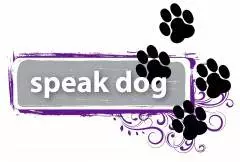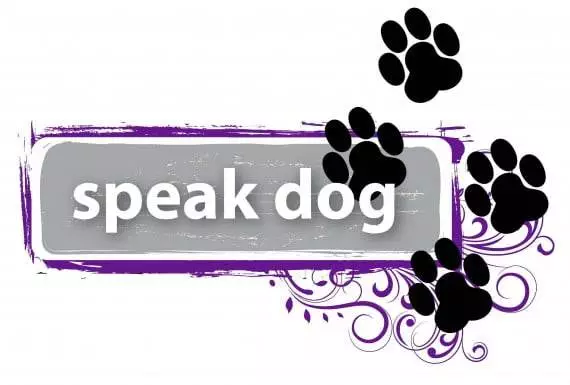When you are training your dog you can use your voice with your dog as a tool for communication. It is best to speak in a neutral tone of voice when giving your dog a cue, say things once clearly, and don’t repeat yourself. You can also use hand signs to reinforce the cue. An example of combining hand signs and voice would be saying the word ‘stay’ and at the same time holding up your hand flat toward the dog, like a police officer’s ‘stop’ hand sign. I recommend using both hand signs and voice cues, it helps clarify things for your dog.
When adding a cue, the best way to do so is to add it backwards. This means that if we’re teaching a dog to sit for the first time we would say something like ‘good sit’ when the dog sits either through luring with a treat, capturing, or physically guiding. It would be no help to the dog to hear the word ‘sit’ if it had never heard the cue before and it wouldn’t be fair to the dog to expect it to automatically know what to do. Imagine how it might be to have a language barrier and have someone just repeat a word over and over without giving you any clues about what they were saying. Wouldn’t it be nice if they showed you the meaning of the word and then said it? Dogs need to know that behaviors have names and when we have them go through a motion and then name it, they can understand.
Another way we can use our voices is by giving marker words to let the dog if they’re right, wrong, or released. The marker word in the previous example was ‘good’. It is best to give a marker during the behavior we want to influence. Markers should be clear, and we should use the correct tone of voice when marking a behavior. ‘Good’ is a common positive marker. Your positive marker should be said in a happy voice. ‘No’ and ‘Hey’ are common negative markers, they tell a dog the behavior they are doing is not one we want right now. We shouldn’t yell negative markers but instead our tone should sound disappointed. ‘Okay’ is a common release cue. Release cues are said in a neutral tone of voice and let the dog know they’re done doing what we asked. If a ‘stay’ is until further notice, the ‘okay’ tells a dog they can get up. Release cues are similar to ‘at ease’. Everyone in the home should use the same words with your dog so it can understand consistently.

